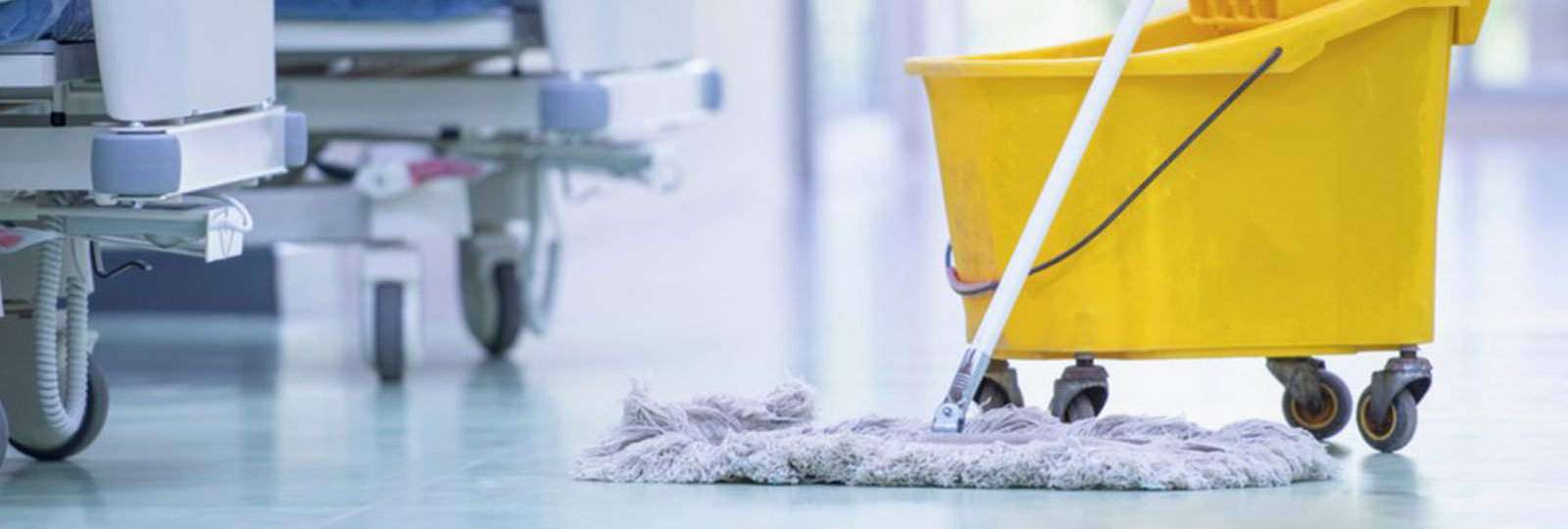
On average, 1 in 25 hospital patients will get a hospital-acquired infection (HAI). These infections, such as MRSA and E.Coli, can be caused by microorganisms being spread from one patient to another either by direct contact or through a contaminated hospital environment.
Keeping the hospital environment clean is therefore crucial for patient safety. However, evidence shows that manual cleaning efforts are often insufficient, leaving microbial contamination present on surfaces.
The drawbacks of manual cleaning
Daily manual cleaning of the hospital environment is a vital first step in eliminating the microorganisms that can lead to HAIs. It involves the physical removal (whether manual or automated) of dirt, dust and soil from surfaces, by using a combination of water, detergent, cloths and mops.
But there are a number of drawbacks to manual cleaning. First, the cleaning solution could become contaminated with the pathogen during the cleaning process, causing it to be spread to clean surfaces, and creating a vicious cycle of contamination. Plus, on some occasions, not enough cleaning attention may be paid to critical surfaces, which enables the pathogens to continue surviving in the environment.
How to make manual cleaning more effective
Monitoring of the manual cleaning process and providing cleaning staff with regular feedback is important for ensuring high standards are maintained.
One method is a visual inspection of the area cleaned by services management. While it is an easy and inexpensive procedure, it can be time-consuming and isn’t always fully accurate. More recently, using fluorescent markers or quantification of adenosine triphosphate (ATP) levels has been proven to work well in establishing how clean the environment is. However, a limitation can be a poor correlation with actual microbial colony counts on surfaces.
As long as the data is presented in a way that is meaningful and useful to staff, each of the above methods can be an acceptable monitoring strategy. Multiple studies have confirmed that the feedback of data on the quality of cleaning to staff improves the effectiveness of cleaning.
In addition, it can be beneficial to educate your cleaning staff on just how serious the threat of HAIs being spread is. Pointing out statistics, for example, can help motivate cleaning staff to be thorough and vigilant.
Beyond environmental cleaning
While it is a vital first step, environmental cleaning alone cannot effectively remove the threat of HAIs. Enhanced cleaning and disinfection also play an important role in preventing the spread of infection.
Enhanced cleaning methods, such as increasing the frequency of cleaning, using extra staff to target ‘high-touch’ surfaces, or bringing in dedicated teams for ‘high risk’ areas is usually done in response to a specific infection prevention and control requirement. For example, when a patient known to be infected with a pathogenic microorganism is discharged from the hospital. However, this often requires additional human resources.
Disinfection is also important, as environmental cleaning is not always sufficient on its own to inactivate certain microbes such as viruses and spores. In these cases, the use of a specific concentration of a chemical agent may be required.
Yet still, when undertaken manually, enhanced cleaning and disinfection are only ever partially effective. Studies show that just 50% of hospital ward surfaces can be adequately decontaminated with the use of manual cleaning and disinfection practices.
Automated cleaning technologies
Specialist automated technologies using hydrogen peroxide (HPV) or ultraviolet light (UV-C) can play a vital role in supporting the efficacy of manual cleaning practices. There is also evidence that the use of self-disinfecting surfaces, such as copper-coated surfaces, can decrease the prevalence of HAIs, though studies have seen mixed results.
HPV and UV-C decontamination methods have been confirmed to be very effective in decreasing microbial surface contamination. HPV decontamination has been found to reduce contamination levels by 95% from the levels observed after deep cleaning.
These automated decontamination technologies can only supplement manual cleaning – they never should replace it. Ultimately, a combination of manual cleaning practices and automated cleaning technologies can help create a clean hospital environment for excellent infection control practice to flourish.
Key takeaways
- Manual environmental cleaning is an important first step in keeping the hospital clean and preventing HAIs, but it isn’t always effective.
- To ensure it as effective as possible, cleaning should be regularly monitored and feedback provided to cleaning staff.
- Manual environmental cleaning should also be supported with disinfection, as well as enhanced cleaning when necessary (i.e. following the discharge of an infected patient or when there has been an outbreak)
- In addition, specialist automated technologies using HPV and UV-C can also be used to supplement manual cleaning, helping to provide a clean and safe hospital environment.





